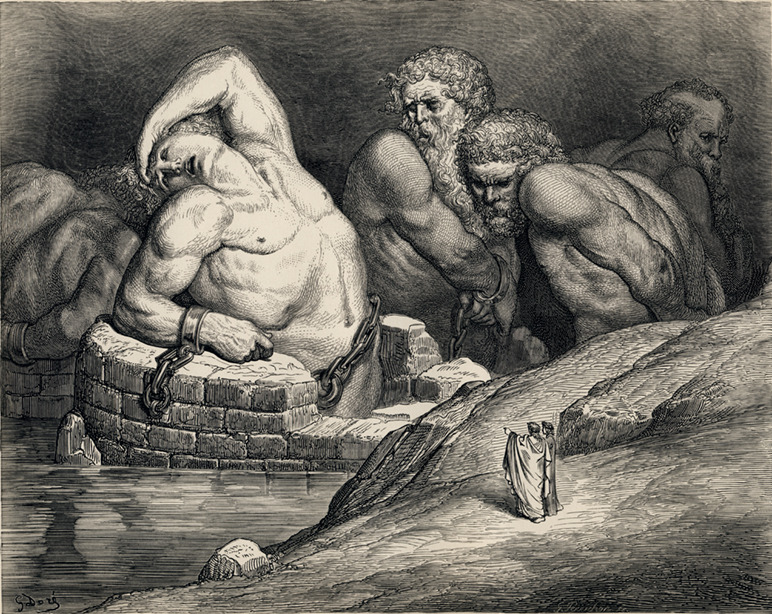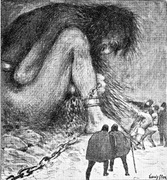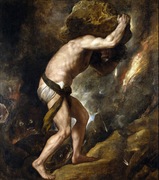Gustave Doré, one of the most renowned illustrators of the 19th century, left an artistic legacy that continues to fascinate and inspire today. Born in 1832 in Strasbourg and died in 1883 in Paris, Doré is widely recognized for his detailed and evocative illustrations of classic literary works. Among his most notable creations is the series of illustrations for Dante Alighieri's "The Divine Comedy", including the impressive "Plate 65" of "Inferno"12.
At Work: “The Titans”
"The Titans" is one of Doré's illustrations for Dante's "Inferno", specifically "Plate 65". This work captures the essence of Dante's epic poem, portraying the titans, mythological figures of immense power and tragedy. Doré’s skill in conveying the grandeur and desolation of the titans is evident in every stroke, creating an image that is both majestic and melancholy.
Context and Meaning
In "Plate 65" of "Inferno", Doré illustrates the scene in which Dante and Virgil find the titans, imprisoned in the pit of the giants. These colossal beings, who defied the gods, are now being punished for their hubris. Doré’s work not only complements Dante’s text, but also adds a visual layer of interpretation, highlighting the futility of rebellion against the divine and the inevitability of divine justice.
The Legacy of Gustave Doré
Doré was a master at capturing the essence of literary narratives through his illustrations. His work in “The Divine Comedy” is a testimony to his ability to transform words into powerful and lasting images. “The Titans” is just one example of how his illustrations continue to resonate with audiences, offering a window into Dante’s dark and complex world.
Conclusion
The work "The Titans" by Gustave Doré is an essential piece for any lover of art and literature. It not only enriches the reading experience of “The Divine Comedy,” but also serves as a reminder of Doré’s incomparable talent as an illustrator. His ability to bring Dante’s words to life through his detailed and moving illustrations is truly remarkable.




